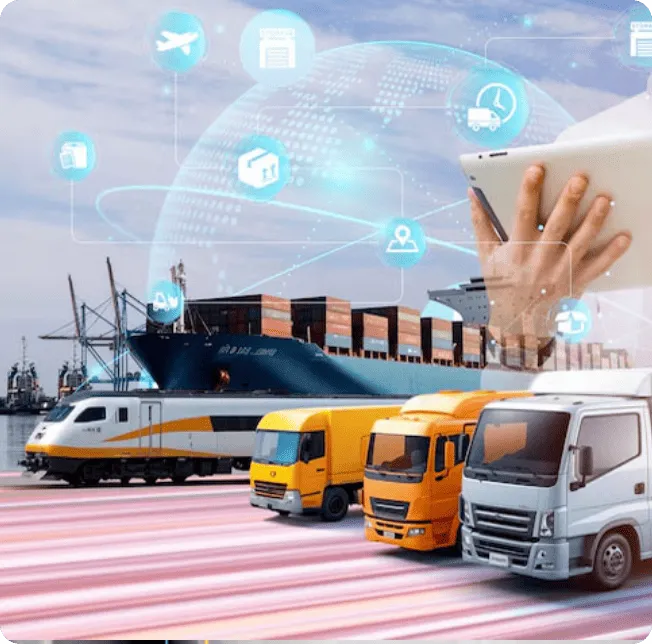Industries We Serve

Data Annotation Services for Logistics companies
Logistics industry and its several processes have benefited from data annotation services in terms of increasing their efficiency, accuracy, and scalability. Be it choices of routes or warehouses or even tracking of fleets and demanding forecasting, the annotated data plays a pivotal role in training AI and machine learning that can well complement the decision-making and can also help in automating the entire logistics chain.

Annotation techniques used for Logistics industry
1. Image and Video Annotation
Object Detection in Warehouses: Labelling images and videos from cameras installed in the warehouse identifies and locates inventory, packages and vehicles. Inventory management can be easily done by AI models using this data, they can track misplaced items and space organization as well.
Fleet Monitoring: Benchmarking of objects such as trucks, shipping containers, and other assets recorded on videos by vehicles-mounted cameras. This makes tracking of assets in real-time possible as well as improving on the vehicle safety systems.
Autonomous Vehicles: Labelling road signs, objects, traffic lights and people for autonomous trucks and delivery robots. This includes general road conditions, Roads, and traffic patting to enhance safe and efficient traffic behaviour.
2. Text Annotation
Document Processing: Automating work documents like invoices, shipping orders, customs declarations, or contracts by means of NLP for annotations. By using these annotations, AI models can automate basic client work, tariffs, customs formalities, and check compliance issues.
Customer Support and Chatbots: Labelling customer inquiries, feedbacks and services to enhance the effectiveness of collaborative intelligent agent chatter and self-help technologies. The NLP model, developed on an annotated text corpus, can answer customer queries, give status of deliveries, and solve problems.
3. Sensor Data Annotation
IoT Sensor Data: Labelling data from IoT sensors to analyse a car, a shipping container, or a warehouse for purposes such as notifications of when a vehicle, container or warehouse requires maintenance, or what is the best route for a particular vehicle. This labelled data could then be used by AI models to better forecast vehicle failures, schedule maintenance in ways that would minimize downtime, and even improve the usage of assets.
Route Optimization: Adding tags to coordinates of GPS, general weather conditions and traffic flow to assist AI models about what are the best routes for delivery trucks where conditions such as road quality, traffic congestion and delivery slots can be added among others.
4. Geospatial Data Annotation
Mapping and Route Planning: Adding such information as types of roads to be passed through, distance and speed limits and traffic congestion data on maps to assist logistics providers in the best routes to use in making deliveries. Annotation in geography helps the AI models to determine the shortest routes and reduce interaction with roads thus saving fuel for deliveries.
Delivery Zones and Heatmaps: Saving delivery zones and using heat maps for AI models to enhance the last-mile delivery, making delivery faster and increasing satisfaction of customers.
Examples of Data Annotation Use in Logistics
1. Optimisation of last-mile delivery Geospatial and annotated sensor data can enhance AI systems by helping delivery services effectively identify and then reduce the delivery time by mapping the delivery route and avoiding traffic zones, arrival time, and the efficient use of resources.
2. Automobiles and Drones To build self-driving trucks, drones and delivery robots, annotating the images and sensor data is indispensable. Such infrastructural information as roads, traffic lights, and other hindrances are described, to develop such systems that will safely and efficiently navigate the roads.
3. Inventory Management Image annotation supports the automation process of the warehouse since through the camera and artificial intelligence it is possible to determine the presence, number and track inventory items. This also saves time amongst its users and enhances efficiency in managing stocks.
4. Predictive Maintenance Yielding sensor data from automobiles and other machinery requires AI models’ annotation to predict maintenance requirements before a failure happens thus cutting expenses on repairs and times out of services. Through analysis of various patterns in data collected by the sensor, a firm can schedule maintenance at the right time to avoid unexpected breakdowns.
Annotation Support your best data annotation services partner for Logistics industry
Data annotation is revolutionizing logistics services by allowing AI to be used in the flow of routes, inventory, fleet, and customer support services. Annotation Support provides best data labelling services which allows logistics companies to work with data in a more efficient and cost-effective way, expand their operations to scale and ultimately deliver better services at higher speeds.
